-
 Bitcoin
Bitcoin $118000
-1.29% -
 Ethereum
Ethereum $3758
-3.52% -
 XRP
XRP $3.113
-5.04% -
 Tether USDt
Tether USDt $0.9998
-0.05% -
 BNB
BNB $818.5
-3.23% -
 Solana
Solana $181.9
-5.10% -
 USDC
USDC $0.9997
-0.04% -
 Dogecoin
Dogecoin $0.2239
-8.33% -
 TRON
TRON $0.3233
0.95% -
 Cardano
Cardano $0.7842
-6.81% -
 Hyperliquid
Hyperliquid $43.35
-2.12% -
 Sui
Sui $3.894
-9.97% -
 Stellar
Stellar $0.4176
-6.99% -
 Chainlink
Chainlink $17.97
-6.68% -
 Bitcoin Cash
Bitcoin Cash $576.7
-2.30% -
 Hedera
Hedera $0.2671
-7.23% -
 Avalanche
Avalanche $24.64
-6.12% -
 UNUS SED LEO
UNUS SED LEO $8.972
0.08% -
 Litecoin
Litecoin $108.1
-6.55% -
 Toncoin
Toncoin $3.198
-5.94% -
 Shiba Inu
Shiba Inu $0.00001325
-6.80% -
 Ethena USDe
Ethena USDe $1.001
-0.04% -
 Uniswap
Uniswap $10.27
-7.02% -
 Polkadot
Polkadot $3.935
-7.49% -
 Monero
Monero $317.7
-2.24% -
 Dai
Dai $0.9999
0.00% -
 Bitget Token
Bitget Token $4.550
-3.85% -
 Pepe
Pepe $0.00001179
-8.68% -
 Cronos
Cronos $0.1418
-2.34% -
 Aave
Aave $286.2
-6.49%
How to adjust the KDJ indicator parameters to be more sensitive?
Adjust KDJ indicator's %K, %D, and smoothing periods to enhance sensitivity for quicker market trend detection in crypto trading.
Jun 11, 2025 at 06:28 pm
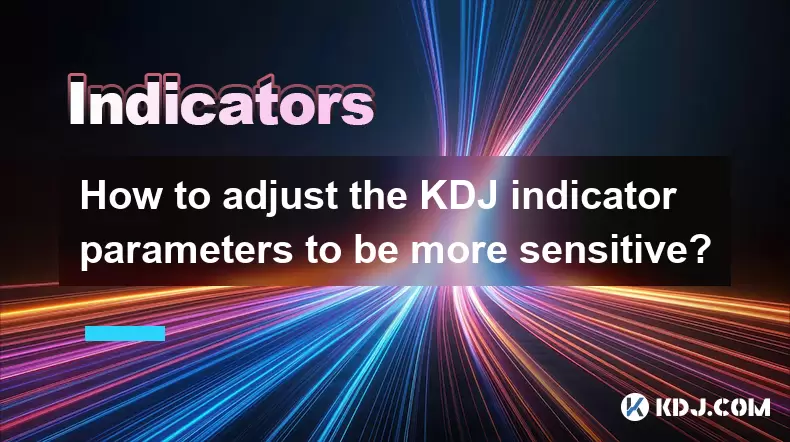
Introduction to the KDJ Indicator
The KDJ indicator, also known as the stochastic oscillator, is a popular technical analysis tool used by traders in the cryptocurrency market to identify potential trend reversals and overbought or oversold conditions. The KDJ indicator consists of three lines: K, D, and J. The K line represents the fastest line and is the most sensitive to price changes, the D line is a moving average of the K line, and the J line is derived from the K and D lines, often used to generate trading signals. Adjusting the parameters of the KDJ indicator can help traders make it more sensitive to price movements, potentially allowing for quicker detection of market changes.
Understanding KDJ Indicator Parameters
The KDJ indicator uses three main parameters: %K period, %D period, and smoothing period. The %K period determines the number of periods used to calculate the %K line, the %D period is the number of periods used to calculate the %D line, which is typically a moving average of the %K line, and the smoothing period is used to smooth the %K line before calculating the %D line. By default, these parameters are often set to 9 for %K, 3 for %D, and 3 for the smoothing period. Adjusting these parameters can make the indicator more sensitive to price changes.
Adjusting the %K Period for Sensitivity
To make the KDJ indicator more sensitive, you can start by adjusting the %K period. A shorter %K period will make the K line react more quickly to price changes, which can be beneficial for identifying short-term trends and potential reversals. Here's how you can adjust the %K period:
- Open your trading platform or charting software.
- Locate the KDJ indicator settings or parameters.
- Find the %K period setting and reduce it from the default value of 9 to a lower number, such as 5 or 3.
- Save the changes and observe how the K line reacts to price movements.
A shorter %K period will result in the K line fluctuating more rapidly, which can help you detect changes in market sentiment more quickly. However, be aware that a shorter %K period may also lead to more false signals, so it's essential to balance sensitivity with reliability.
Adjusting the %D Period for Sensitivity
The %D period is another parameter that can be adjusted to increase the sensitivity of the KDJ indicator. The %D line is a moving average of the %K line, and a shorter %D period will make the %D line react more quickly to changes in the %K line. Here's how you can adjust the %D period:
- Open your trading platform or charting software.
- Locate the KDJ indicator settings or parameters.
- Find the %D period setting and reduce it from the default value of 3 to a lower number, such as 2 or 1.
- Save the changes and observe how the %D line reacts to changes in the %K line.
A shorter %D period will result in the %D line being more responsive to the %K line, which can help you identify potential trading signals more quickly. However, like the %K period, a shorter %D period may also increase the likelihood of false signals, so it's crucial to find the right balance.
Adjusting the Smoothing Period for Sensitivity
The smoothing period is the final parameter that can be adjusted to increase the sensitivity of the KDJ indicator. The smoothing period is used to smooth the %K line before calculating the %D line, and a shorter smoothing period will result in less smoothing, making the %K line more responsive to price changes. Here's how you can adjust the smoothing period:
- Open your trading platform or charting software.
- Locate the KDJ indicator settings or parameters.
- Find the smoothing period setting and reduce it from the default value of 3 to a lower number, such as 2 or 1.
- Save the changes and observe how the %K line reacts to price movements.
A shorter smoothing period will result in the %K line being less smoothed, which can help you detect changes in market sentiment more quickly. However, like the other parameters, a shorter smoothing period may also increase the likelihood of false signals, so it's important to find the right balance.
Combining Parameter Adjustments for Optimal Sensitivity
To achieve the optimal sensitivity for the KDJ indicator, you can combine adjustments to the %K period, %D period, and smoothing period. Here's an example of how you can combine these adjustments:
- Open your trading platform or charting software.
- Locate the KDJ indicator settings or parameters.
- Reduce the %K period from 9 to 5.
- Reduce the %D period from 3 to 2.
- Reduce the smoothing period from 3 to 2.
- Save the changes and observe how the KDJ indicator reacts to price movements.
By combining these adjustments, you can make the KDJ indicator more sensitive to price changes, potentially allowing for quicker detection of market trends and reversals. However, it's essential to test different combinations of parameters to find the optimal settings for your trading strategy and the specific cryptocurrency you are trading.
Monitoring and Fine-Tuning the Adjusted KDJ Indicator
After adjusting the KDJ indicator parameters, it's crucial to monitor its performance and fine-tune the settings as needed. Here are some steps you can take to monitor and fine-tune the adjusted KDJ indicator:
- Observe the indicator's performance: Pay close attention to how the adjusted KDJ indicator reacts to price movements and whether it generates reliable trading signals.
- Compare with historical data: Use historical price data to backtest the adjusted KDJ indicator and assess its performance over different market conditions.
- Adjust parameters incrementally: If the adjusted KDJ indicator is too sensitive and generates too many false signals, you can incrementally increase the %K period, %D period, or smoothing period to reduce sensitivity.
- Test different parameter combinations: Experiment with different combinations of %K period, %D period, and smoothing period to find the optimal settings for your trading strategy.
By continuously monitoring and fine-tuning the adjusted KDJ indicator, you can ensure that it remains effective and reliable in identifying potential trading opportunities in the cryptocurrency market.
Frequently Asked Questions
Q: Can adjusting the KDJ indicator parameters affect its reliability?
A: Yes, adjusting the KDJ indicator parameters to make it more sensitive can potentially affect its reliability. A more sensitive indicator may generate more false signals, so it's essential to find the right balance between sensitivity and reliability.
Q: Are there other technical indicators that can be used in conjunction with the adjusted KDJ indicator?
A: Yes, you can use other technical indicators, such as the Relative Strength Index (RSI) or Moving Average Convergence Divergence (MACD), in conjunction with the adjusted KDJ indicator to confirm trading signals and improve the overall reliability of your trading strategy.
Q: How often should I review and adjust the KDJ indicator parameters?
A: It's a good practice to review and adjust the KDJ indicator parameters regularly, especially when market conditions change or when you switch to trading a different cryptocurrency. You may need to adjust the parameters more frequently during volatile market conditions and less frequently during stable market conditions.
Q: Can the adjusted KDJ indicator be used for long-term trading strategies?
A: While the adjusted KDJ indicator is typically used for short-term trading strategies due to its increased sensitivity, it can also be used for long-term trading strategies by adjusting the parameters to be less sensitive and using it in conjunction with other long-term indicators.
Disclaimer:info@kdj.com
The information provided is not trading advice. kdj.com does not assume any responsibility for any investments made based on the information provided in this article. Cryptocurrencies are highly volatile and it is highly recommended that you invest with caution after thorough research!
If you believe that the content used on this website infringes your copyright, please contact us immediately (info@kdj.com) and we will delete it promptly.
- Bitcoin, Remittix Presale, and DeFi Remittance: A New Yorker's Take
- 2025-07-29 14:30:12
- Bitcoin Price Stagnation: Is the Cryptocurrency Market at a Crossroads?
- 2025-07-29 12:30:12
- Coinbase Eyes India: Acquisition of CoinDCX on the Horizon?
- 2025-07-29 12:30:12
- Cryptocurrency, Treasuries, and Companies: A New Era?
- 2025-07-29 12:50:12
- Zhipu AI's GLM-4.5: China's Open-Source Challenger to GPT-4
- 2025-07-29 12:50:12
- Meme Coins Gone Viral: Presales, Trolling Cats, and the Future of Crypto Hype
- 2025-07-29 14:30:12
Related knowledge
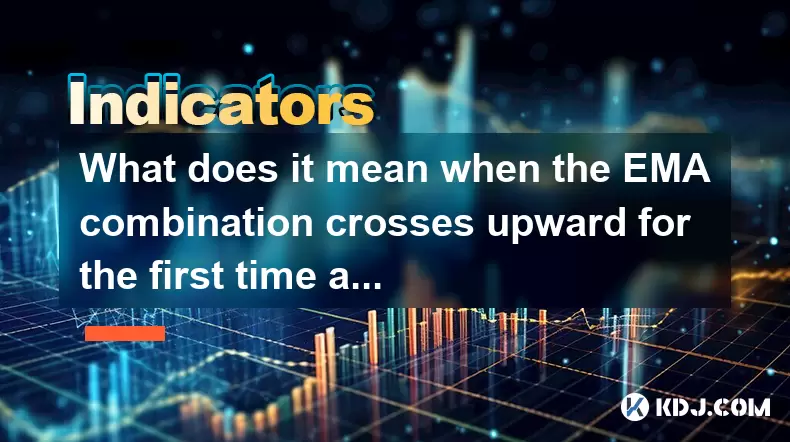
What does it mean when the EMA combination crosses upward for the first time after sideways trading?
Jul 28,2025 at 03:43pm
Understanding the EMA and Its Role in Technical AnalysisThe Exponential Moving Average (EMA) is a widely used technical indicator in cryptocurrency tr...
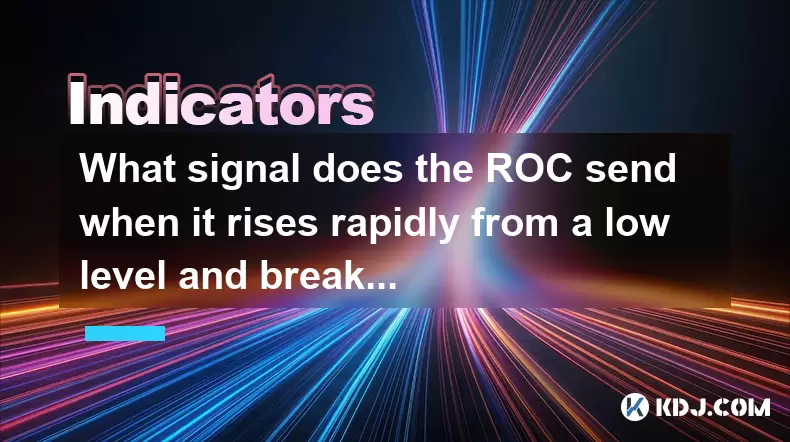
What signal does the ROC send when it rises rapidly from a low level and breaks through the zero axis?
Jul 27,2025 at 10:15am
Understanding the Rate of Change (ROC) IndicatorThe Rate of Change (ROC) is a momentum-based oscillator used in technical analysis to measure the perc...
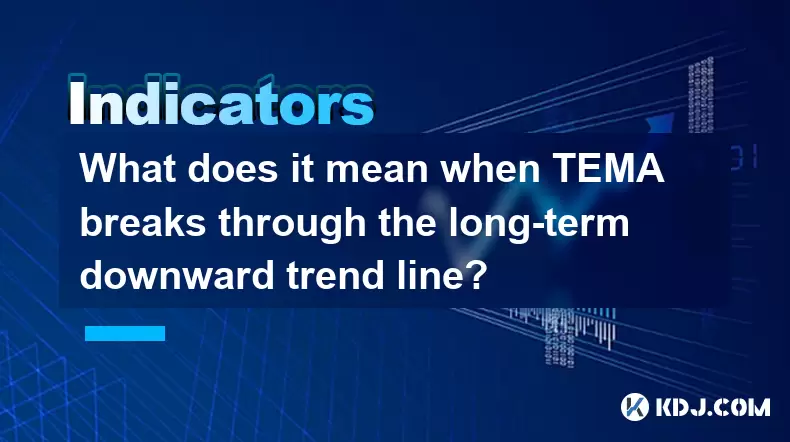
What does it mean when TEMA breaks through the long-term downward trend line?
Jul 29,2025 at 02:50pm
Understanding the Role of Smart Contracts in Decentralized Finance (DeFi)Smart contracts are self-executing agreements with the terms of the agreement...
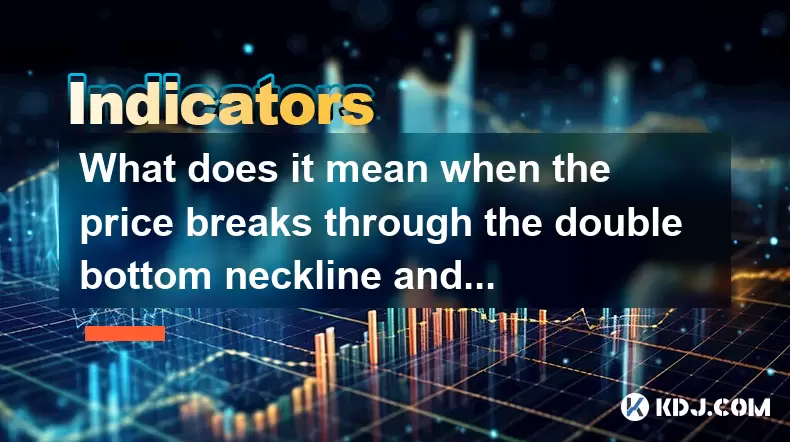
What does it mean when the price breaks through the double bottom neckline and the moving averages are arranged in a bullish pattern?
Jul 28,2025 at 10:57am
Understanding the Double Bottom PatternThe double bottom is a widely recognized reversal chart pattern in technical analysis, particularly within the ...
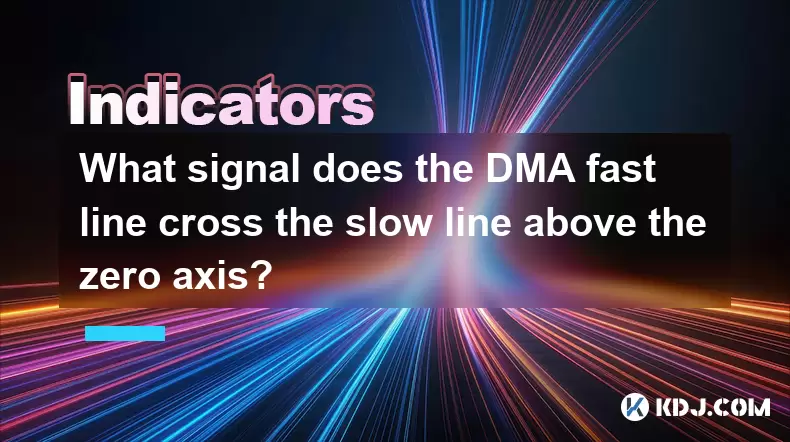
What signal does the DMA fast line cross the slow line above the zero axis?
Jul 28,2025 at 05:42am
Understanding the DMA Indicator and Its ComponentsThe DMA (Difference of Moving Averages) indicator is a technical analysis tool used in cryptocurrenc...
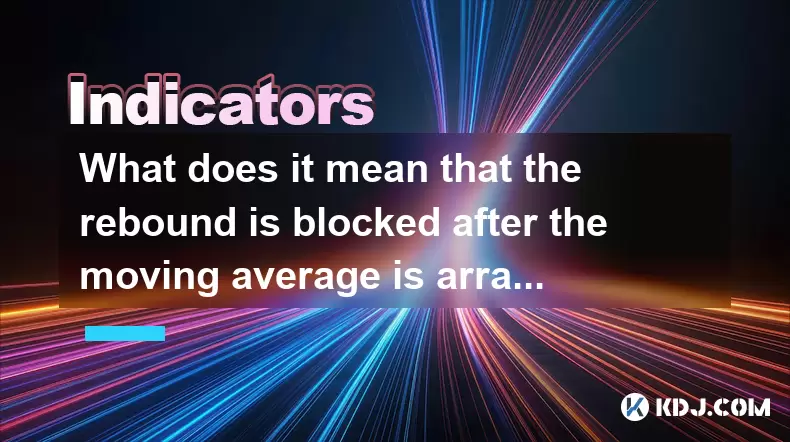
What does it mean that the rebound is blocked after the moving average is arranged in a short position for the first time?
Jul 26,2025 at 10:51am
Understanding the Short-Term Moving Average ConfigurationWhen traders refer to a 'short position arrangement' in moving averages, they are describing ...

What does it mean when the EMA combination crosses upward for the first time after sideways trading?
Jul 28,2025 at 03:43pm
Understanding the EMA and Its Role in Technical AnalysisThe Exponential Moving Average (EMA) is a widely used technical indicator in cryptocurrency tr...

What signal does the ROC send when it rises rapidly from a low level and breaks through the zero axis?
Jul 27,2025 at 10:15am
Understanding the Rate of Change (ROC) IndicatorThe Rate of Change (ROC) is a momentum-based oscillator used in technical analysis to measure the perc...

What does it mean when TEMA breaks through the long-term downward trend line?
Jul 29,2025 at 02:50pm
Understanding the Role of Smart Contracts in Decentralized Finance (DeFi)Smart contracts are self-executing agreements with the terms of the agreement...

What does it mean when the price breaks through the double bottom neckline and the moving averages are arranged in a bullish pattern?
Jul 28,2025 at 10:57am
Understanding the Double Bottom PatternThe double bottom is a widely recognized reversal chart pattern in technical analysis, particularly within the ...

What signal does the DMA fast line cross the slow line above the zero axis?
Jul 28,2025 at 05:42am
Understanding the DMA Indicator and Its ComponentsThe DMA (Difference of Moving Averages) indicator is a technical analysis tool used in cryptocurrenc...

What does it mean that the rebound is blocked after the moving average is arranged in a short position for the first time?
Jul 26,2025 at 10:51am
Understanding the Short-Term Moving Average ConfigurationWhen traders refer to a 'short position arrangement' in moving averages, they are describing ...
See all articles

























































































